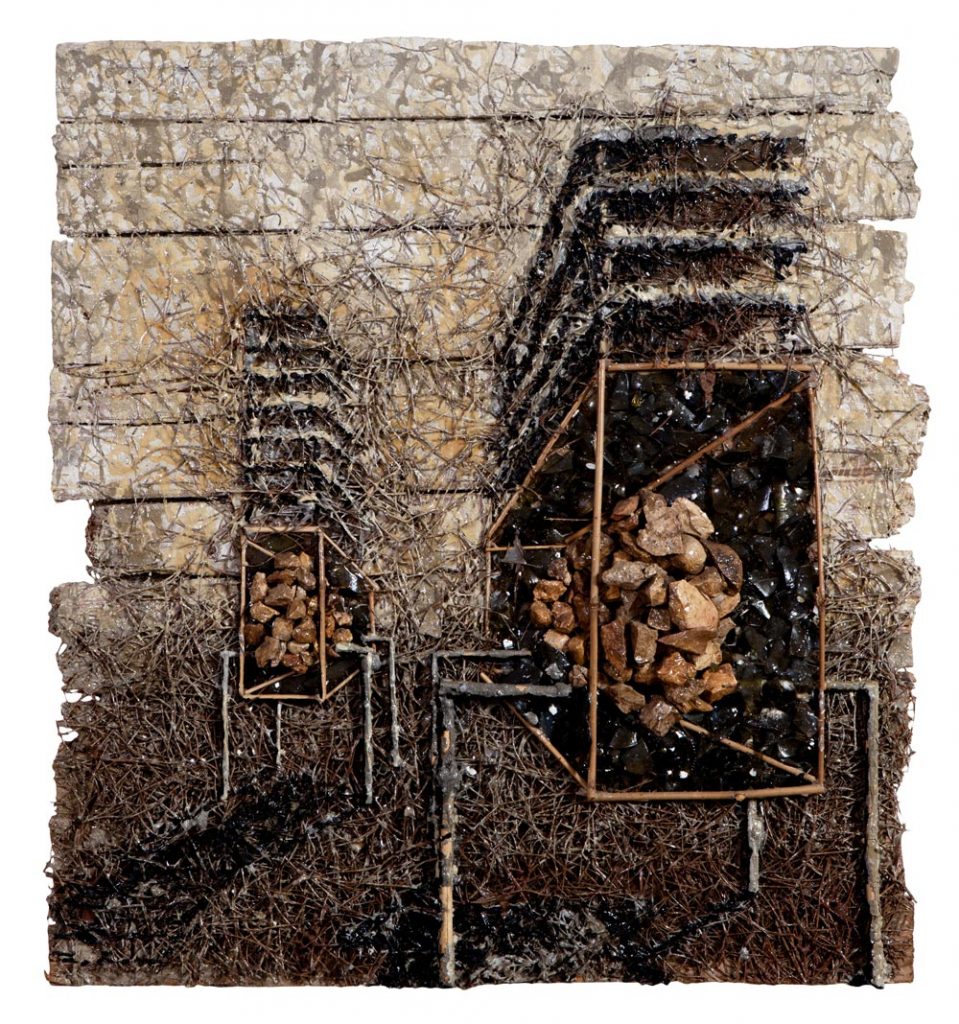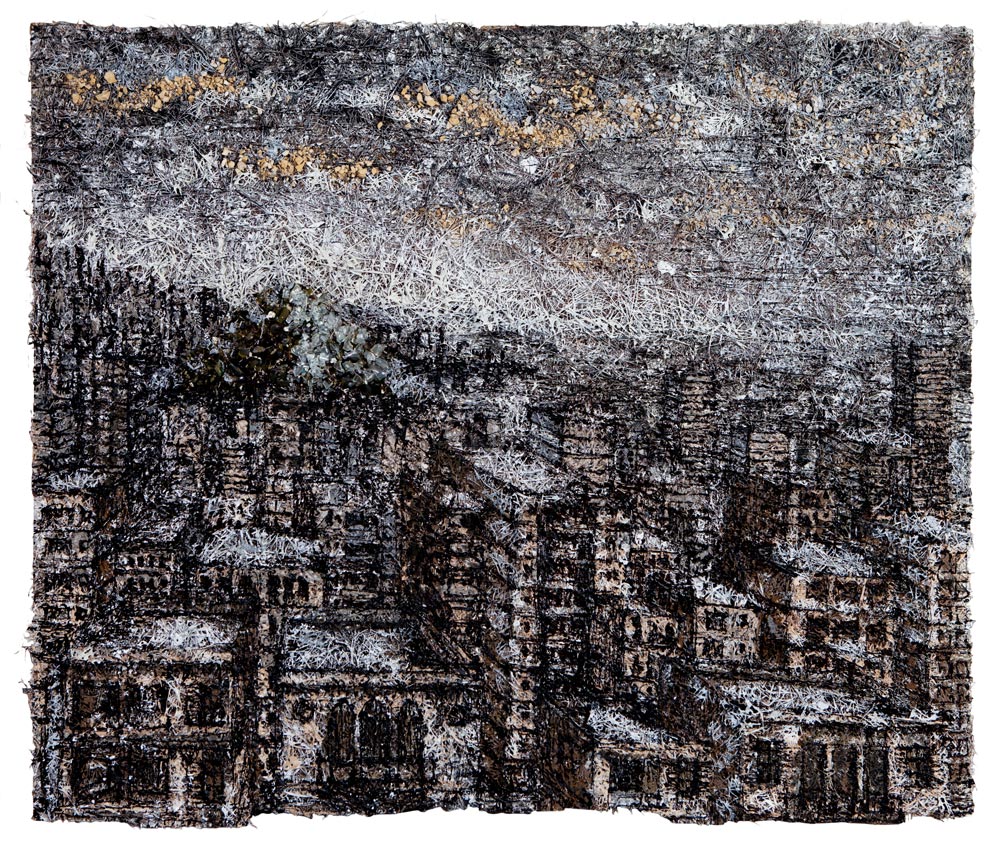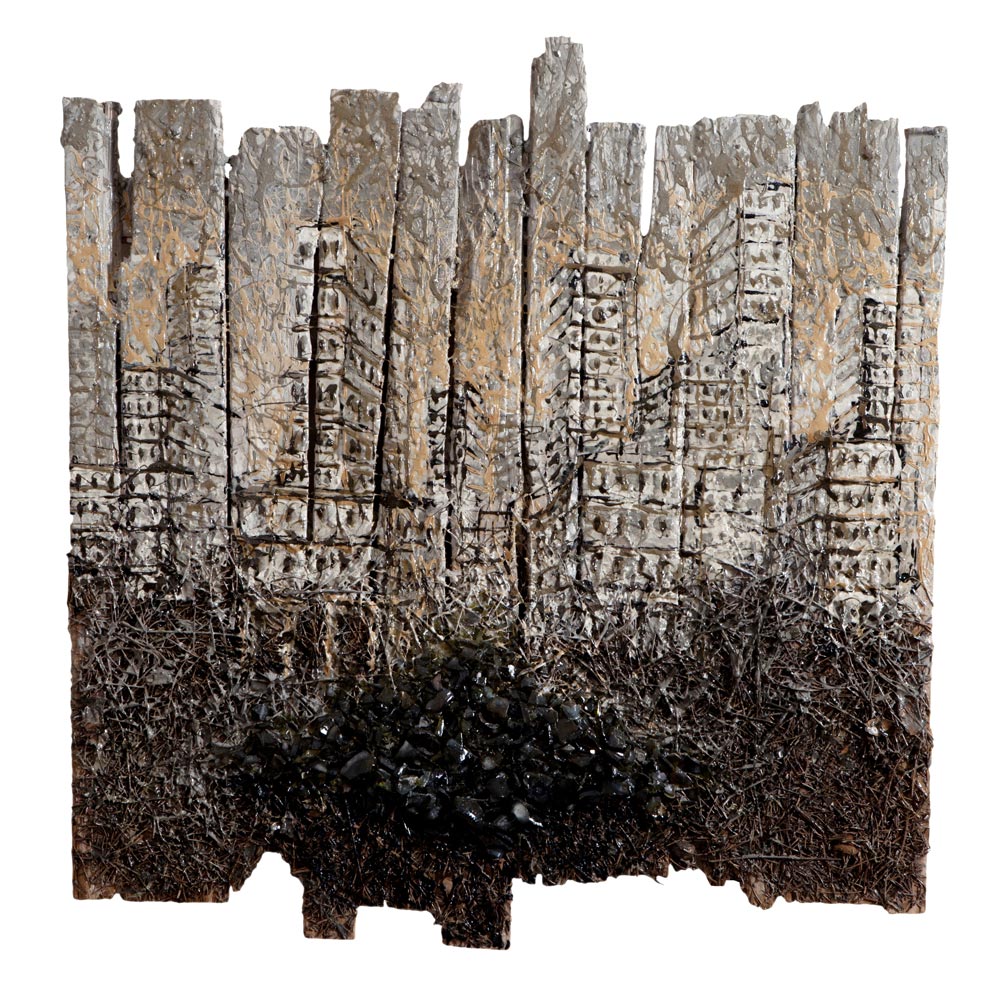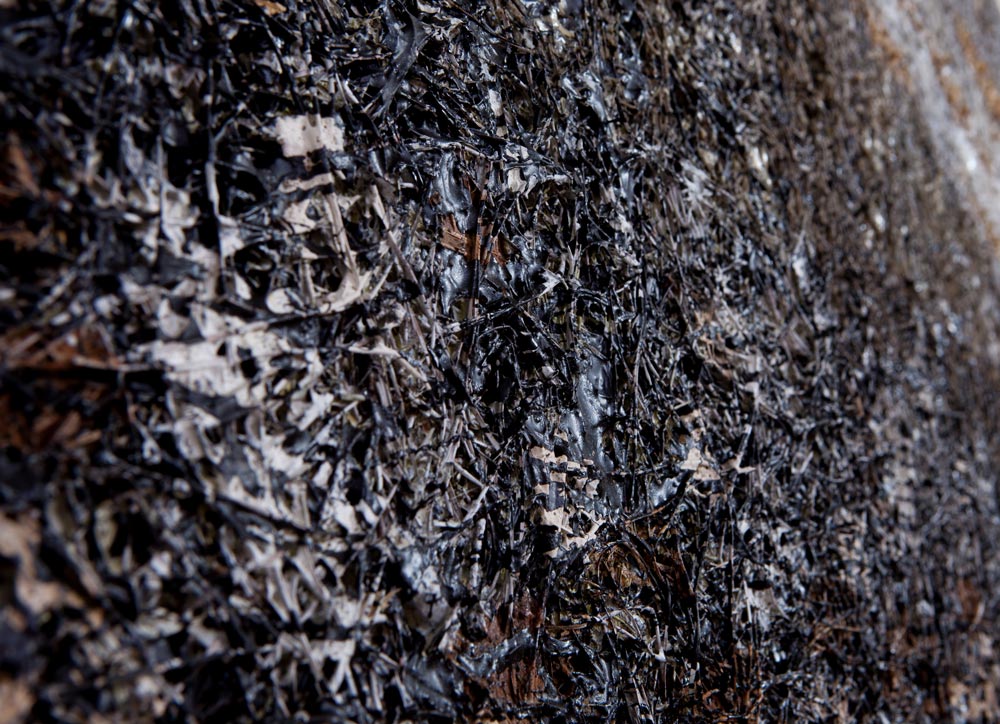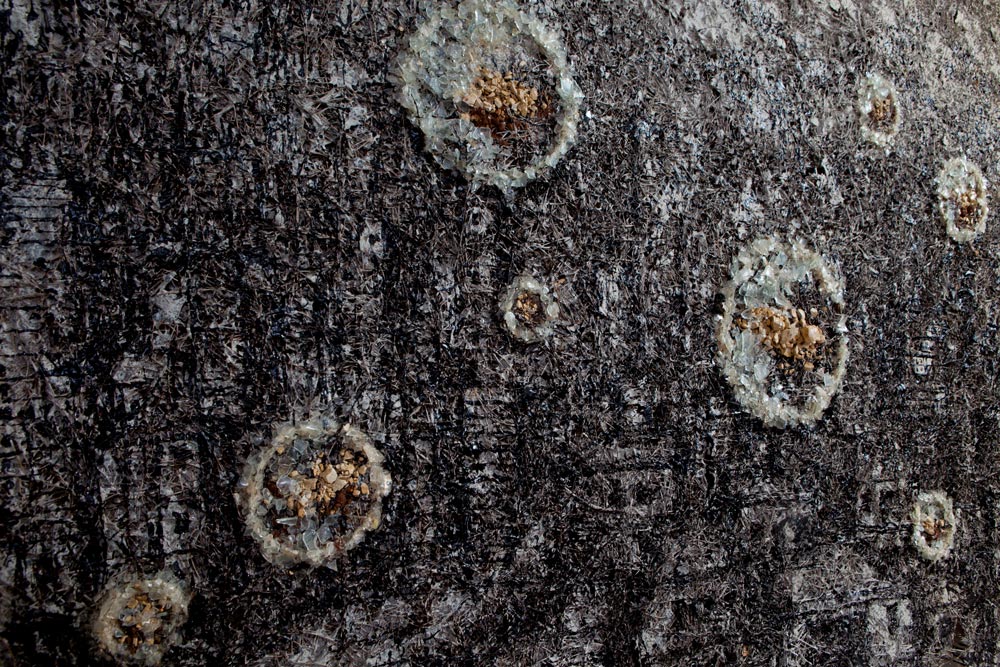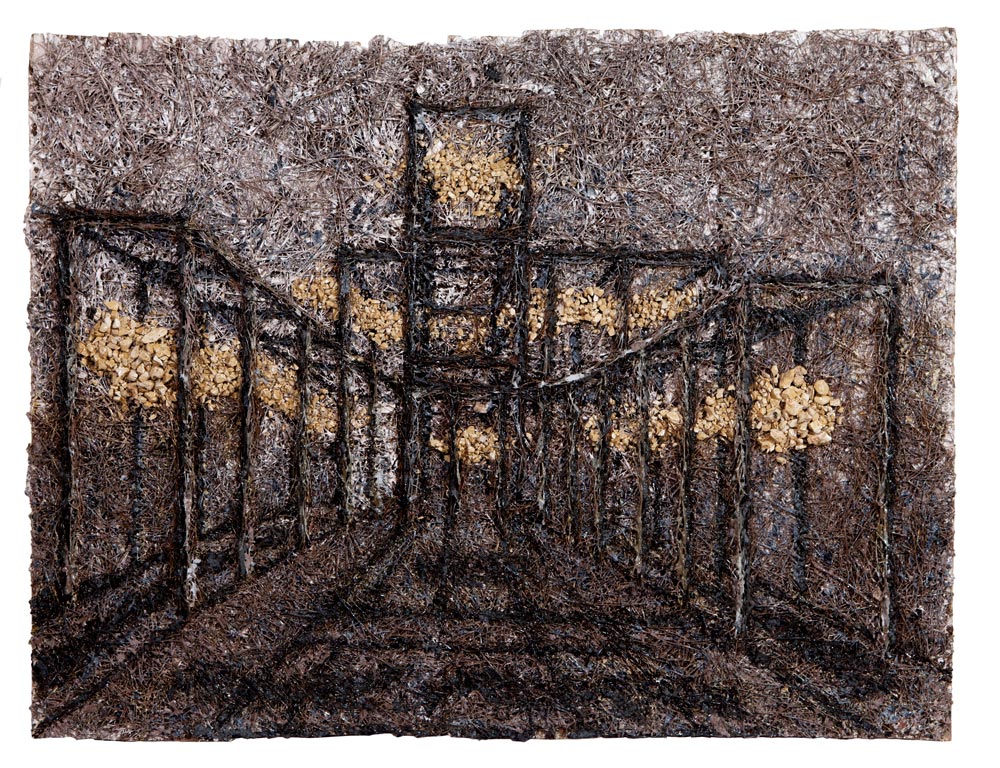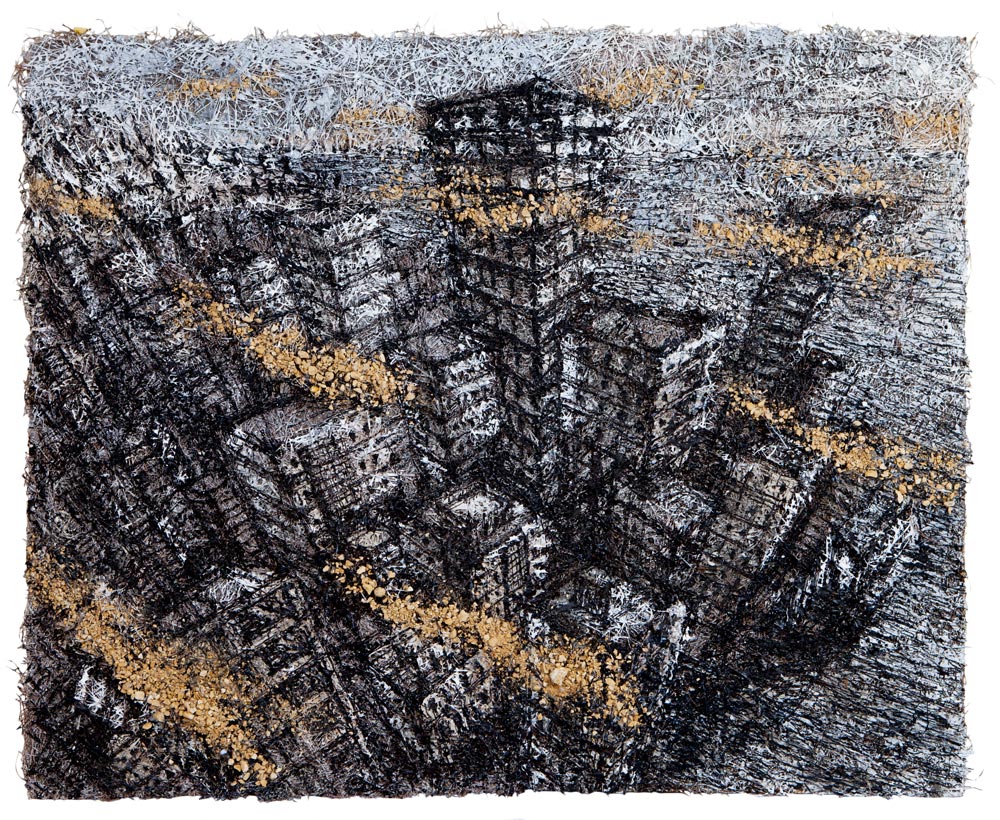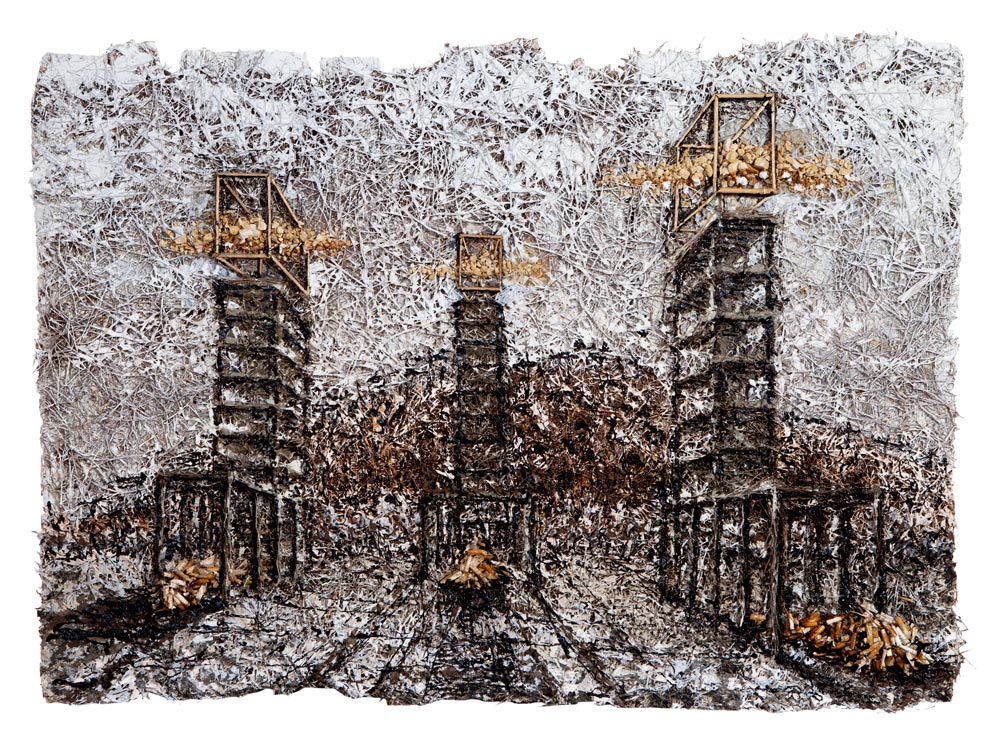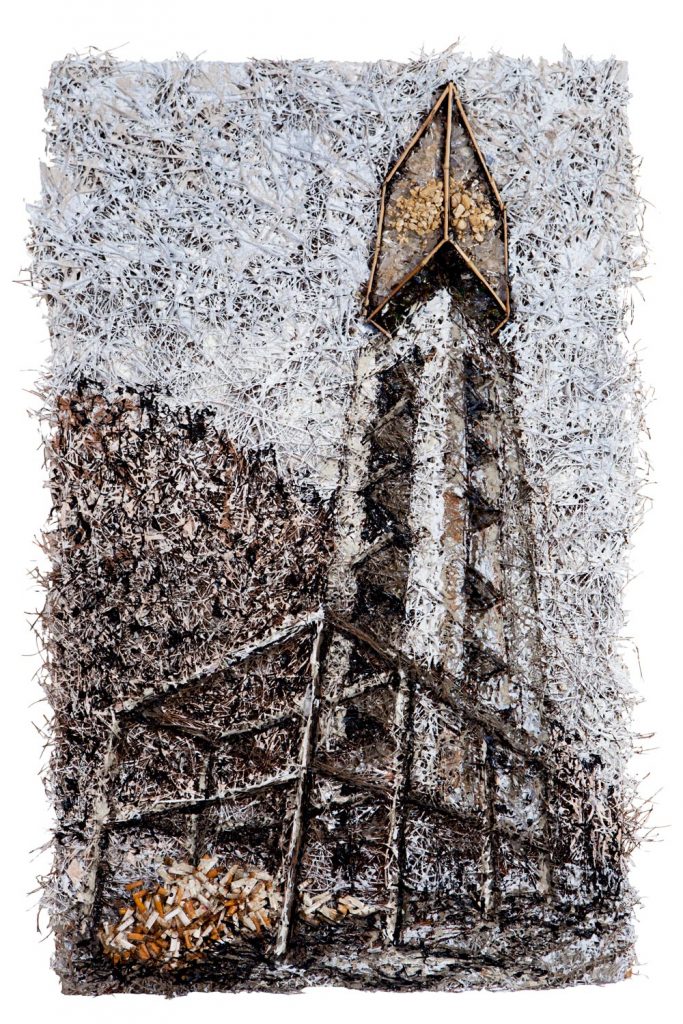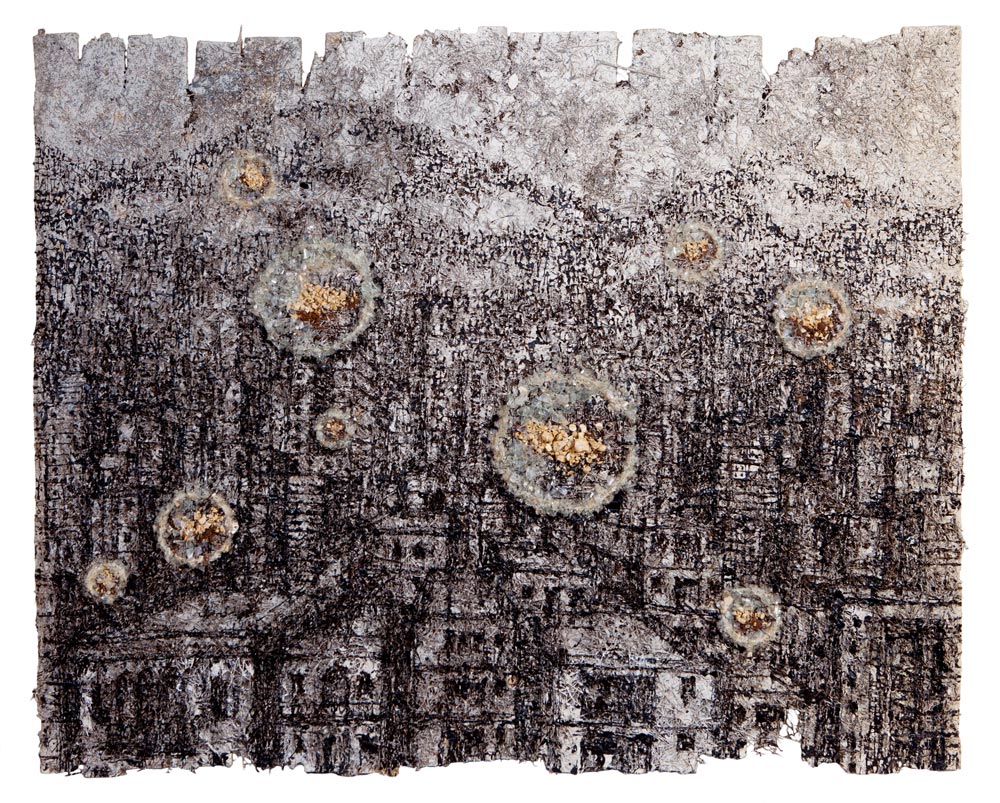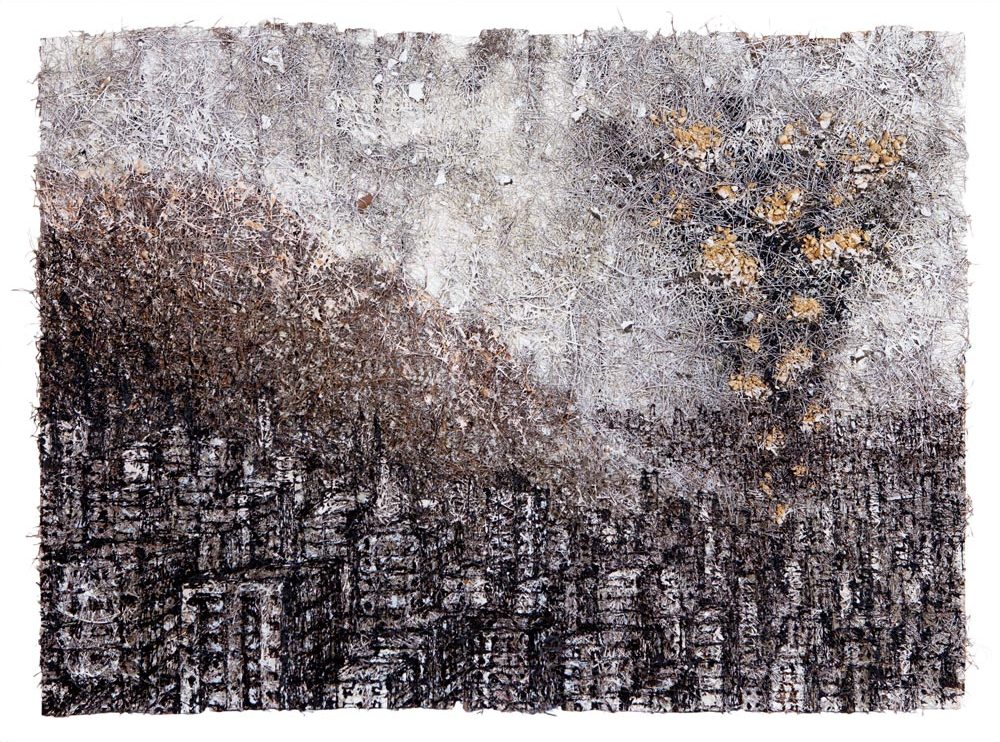This body of work is about a parallel perception of reality where the nature of the medium is changing due to a paratopia of natural laws resulting from the current social climate.
In the reign of cement, covering every positive and negative space in the city, stones reach the moment of expression, polarity of their atoms line up in one direction, they are fleeing as a result of the magnetic repulsion from the social sensitivity.
It’s a displacement/paratopia where natural laws of the city and that of the medium are no more the same.
Social happenings, human sensitivity, people’s confrontations…all led to the departure of nature, into a paralife where they become free.
External conflict and its repercussions in Lebanon is readily apparent while internal struggles with basic infrastructure exacerbate the situation. In contrast to the lack of public utilities, unchecked capitalist investment in high-end development invades Beirut. On top of the humanitarian and infrastructure work that needs to be done there is also an urgency to protect cultural heritage buildings, initiate more green spaces and create projects benefiting the whole population.
As a visual artist, inundated with advertising and marketing campaigns for luxury goods around Beirut, Aoun deeply feels the schizophrenia in the current crises. How can an artist take back visual representations? How can art generate conversation about present issues? Reinterpreting this feeling through materials, he darkly reimagines the present and future of the city with a few slivers of hope.
While the concrete landscape spreads out further from city, Aoun is surrounded by nature that is slowly being encroached on. The everyday materials around his studio add another layer to the story: dead pine needles of trees cut down, rocks from the local quarry where part of a mountain is shaved away, tar from street work, cement of new buildings and the wood that forms his “canvas” scavenged from construction sites. The rejection of store bought materials and paint produced in foreign countries, is implicit, “The medium is the message,” he says.
There is visceral and sculptural nature of the work that is present even in the treatment that exudes emotion. The pine needles suffocated in cement have a broken nervous energy. The thick tar is used like paint to depict urban landscapes with towering black buildings, rendered with a perfect perspective coming from his days as an architect. These monster buildings even go so far to trap nature, harnessing the environment.
The dark landscapes have an occasional protagonist too, that’s disguised in the unlikely beige stone or brown earth. This stone, in reality, was extracted violently, from the interior of the mountain. Contrastingly, when its used in the work it introduces a natural and poetic dimension inside this world of cement, adding a movement and visual
lightness to the pieces. It is displaced or trying to escape the urban landscapes. The stones are used ironically enough as an ephemeral form, sometimes as a cloud, sometimes as hope that bubbles through a dark flume of smoke from trash fires or explosions. The brown earth of the mountain in the skyline also leads the viewer back to nature and away from foregrounded problems.
The physical weight of the pieces allude the heavy nature of the message. Stones, in some cultures, have a history of life giving or medicinal properties, here it takes on a lightness that is a soul of the work or perhaps of humanity.
No Catalogue Found

